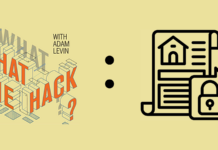
Your Uber account is about 17 times more valuable to a hacker than your credit card credentials, according to a report security company Trend Micro compiled for CNBC. They found that stolen Uber credentials sell for an average of $3.78 per account on underground online marketplaces, while bundles of credit card data are sold for 22 cents, at most.
Lots of accounts are more valuable than credit card info. PayPal accounts with a guaranteed balance of $500 go for an average of $6.43, Facebook accounts run about $3.02, Google Voice about 97 cents and Netflix 76 cents, Trend Micro found.
So what good is this info to a hacker? There are a few ways someone can capitalize on stolen credentials. The information people store in online accounts can help someone piece together the details they need to steal and abuse others’ identities. Then there’s the potential to steal money. For example, a hacker could charge someone’s Uber account for phantom rides, a theft tactic in which someone sets up a fake driver account to receive payment for rides the user never takes, CNBC reports.
Preventing various kinds of account theft can be really difficult, and people usually find out about it only after it occurs. One way to keep hackers at bay is to use multi-factor authentication, if available, to log into accounts. Security experts tend to recommend people avoid using the same password across multiple platforms, so one account hack doesn’t lead to another, potentially more valuable, break-in. With all the online accounts people have, it’s challenging to regularly monitor every one for unauthorized activity, but it is in your best interest to do so.
On top of that, frequently reviewing your credit card and debit card activity can help you quickly spot fraud. You can monitor your credit, too, if you have reason to believe your personal information was stolen. Unexpected changes to your credit scores can be a sign of identity theft, as well. (You can get two free credit scores once a month on Credit.com.)
This article originally appeared on Credit.com and was written by Christine DiGangi.










